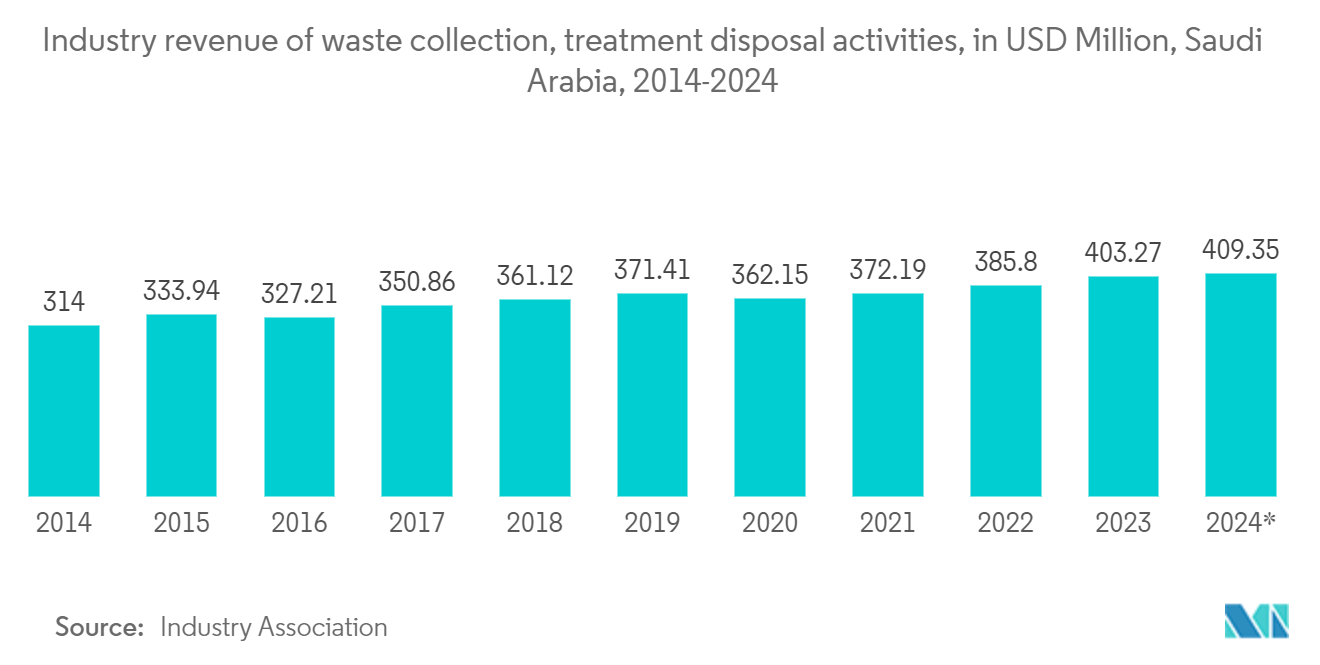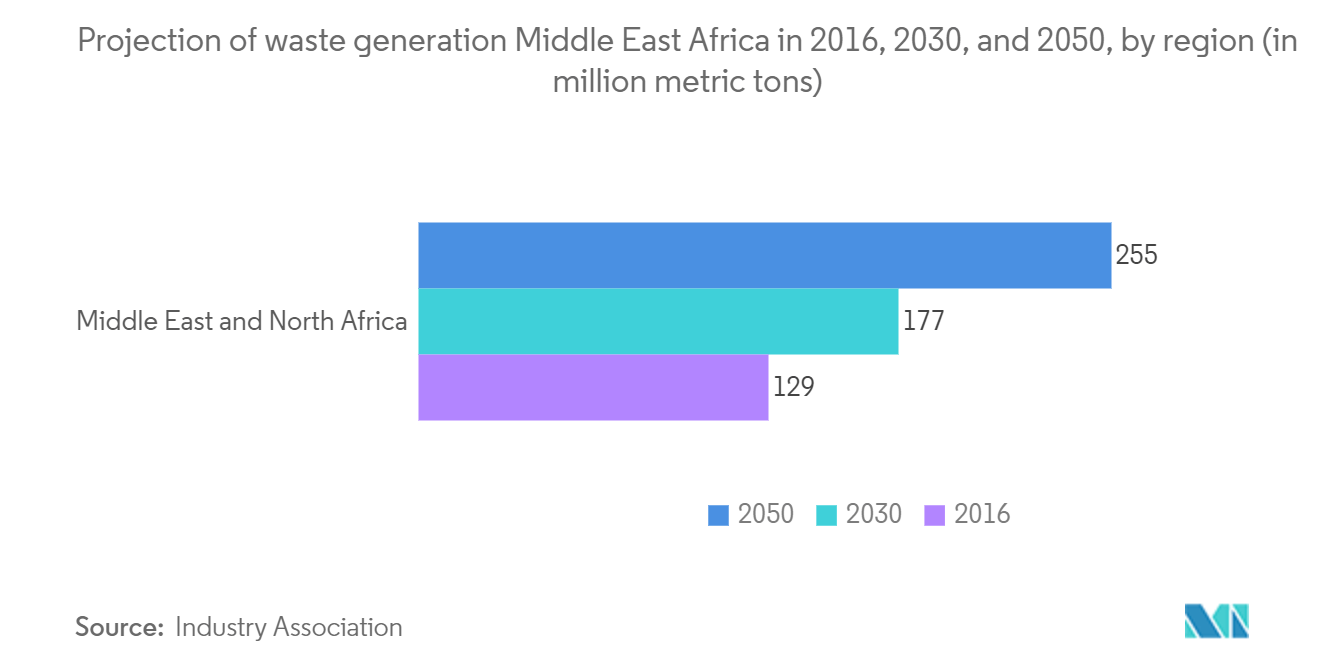Market Trends of Pneumatic Waste Management System In GCC
Increasing Demand for Pneumatic Waste Management Systems in Saudi Arabia is Driving the Market
- More than 75% of Saudi Arabia’s population is concentrated in urban areas. Nearly half of the total waste comes from three major cities in the Kingdom: 21% from Riyadh, 14% from Jeddah, and 8% from Dammam, as per the Director of Waste Management at the Ministry of Investment.
- The rapid industrial development, high population growth, and rapid urbanization of Saudi Arabia have increased pollution and waste generation. The average per capita waste generation in Saudi Arabia is 1.7 kg per day, according to available statistics from the Ministry of Environment, Water and Agriculture (MEWA). More than 106 million tons of waste is expected to be treated by 2035. This indicates a high demand for pneumatic waste collection systems in the Kingdom of Saudi Arabia in the near future.
- The companies that are most active in the KSA and GCC region are ENVAC, URD, Stream, and MariMatic. MariMatic is currently delivering another pneumatic waste collection system to Saudi Arabia. This system is in a new part of the city called Masar Makkah. Over 210 plots with hotels and hotel apartment buildings are connected to a pipe network. The system will be the world’s second-largest automatic waste collection system. Envac is also delivering pneumatic waste systems to the Kingdom’s other two projects, Jabal Omar Urban Development and King Abdullah Financial District (KAFD).
- Saudi Arabia is simultaneously looking at four multibillion-dollar construction contracts, including NEOM, AMAALA, Qiddiya, and the Red Sea Project. Smart city projects are being developed with an increased focus on sustainability, energy distribution, mobility, health, and security. Investing in a modern waste collection and management system becomes essential for these cities of the future.
- Saudi Arabia has set a carbon-capture target of 44 million tons a year by 2035. The Saudi government has pledged to cut its carbon emissions to net zero by 2060. Pneumatic systems can decrease emissions from the transit of waste by up to 90%, contributing to the Kingdom’s emission reduction goals. These factors are expected to drive the growth of the pneumatic waste systems market in Saudi Arabia.

Increasing Demand for Auto Waste Compact Collect System
- The auto waste compact collect pneumatic system is based on bi-compartmentalized containers that help reduce the volume of the terminal compared to a traditional pneumatic waste collection system. This compact plant takes up less space and does not need civil works to be installed.
- It collects up to 5 tons of the generated waste per day, providing a solution to users’ needs. It has a watertight transport system with hermetic closure. Using a network of pipes, the waste is transported from the point of discharge using aspiration to the central area, where the waste is disposed of and compacted in bi-compartmentalized containers automatically to be transported to the treatment plant.
- This compact plant is also called a modular plant because it has three main modules: suction module, compaction module, and container module. The container module is transported to the urban waste treatment plant on a truck. The auto waste system performs better in low production (0 to 5 tons/day).
- Compact plants, designed by URD, are used for the automatic collection of waste and laundry in small and medium areas, up to 5 tons/day. A compact plant requires small-scale installation and minimal space. It allows the implementation of the latest innovations in pay-as-you-throw systems. It is an attractive investment because of its low cost, and it offers many advantages compared to manual handling collection. With a single unit, the compact terminal can simultaneously collect one or two different streams, compacted to save operational costs.
- The Msheireb-Heart of Doha project is designed to accommodate an estimated population mix comprising 2,226 residents, 2,930 retail employees, and 12,286 office employees spanning 3,03,243 sq. m of residential floor space of 2,53,906 sq. m of commercial area and 1,51,611 sq. m of hotel and amenities areas.
- Envac's system is designed to collect three fractions (organic, residual, and recyclable) of waste. Envac's system handles about 180 cubic meters or 27 tons per day of waste. Envac's system not only collects three fractions of waste from this state-of-the-art downtown development but also tracks the amount of waste generated by each tenant, thus allowing for a weight-based charging system.
- Envac's system at the Msheireb, Heart of Doha project is unique as it will be the first installation in the Middle East with access card readers and a weighing mechanism incorporated into the inlet doors. This enables the system to track who deposits waste and how much.


